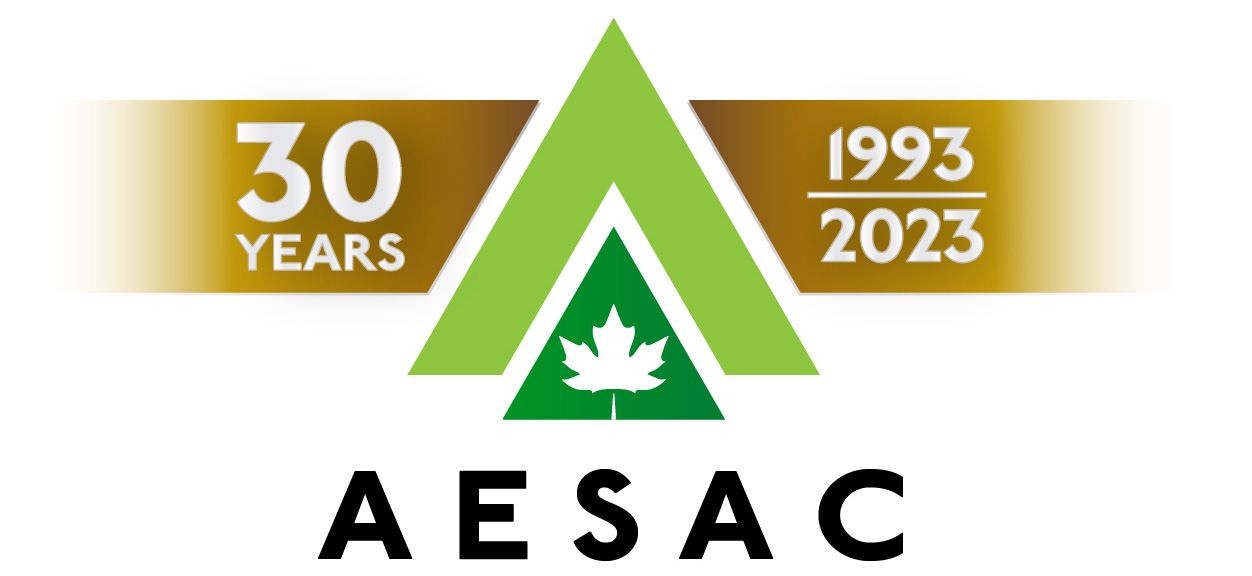- Home
- Training Courses
- Membership
- About Us
- Instructors Blog
- December 2023: All I Want For Christmas
- November 2023: ESA Report Reviews
- October 2023: Can AI Write an ESA Report?
- September 2023: Getting Paid... or Not
- August 2023: Take Me Back...
- July 2023: To Bid or Not To Bid
- June 2023: Selecting a Supplier
- April 2023: Phase 1 Problems, Part 3
- March 2023: Phase 1 Problems, Part 2
- February 2023: Phase 1 Problems, Part 1
- January 2023: Working Outside in Winter
- 2022 Blogs
- 2021 Blogs
- December 2021: Asbestos in your Home
- Sept 2021: Dirty Jars And Other Bad Things… Part 2
- August 2021: Dirty Jars And Other Bad Things… Part 1
- July 2021: How do you want that drawing to look? Part 2
- June 2021: How Did You Want That Drawing To Look? Part 1
- April 2021: So You Need a RSC... Part 2
- March 2021: So You Need a RSC... Part 1
- February 2021: What's In Your Toolbox? Part 2
- January 2021: What's In Your Toolbox? Part 1
- 2020 Blogs
- December 2020: A Day in the Life, Part 2
- November 2020: A Day in the Life, Part 1
- October 2020: Exploring Your Career Path
- September 2020: So You Want To Start Your Own Business - Part 2
- August 2020- So You Want to Start Your Own Business
- June 2020: Effective Communication
- May 2020: Tips For Working From Home
- April 2020: Conducting ESA’s During a Pandemic
- March 2020: It's Not Easy Being Green
- February 2020: Looking Ahead; Bold Predictions for the Next Decade
- January 2020: Looking Back; A Decade in Review
- 2019 Blogs
- 2018 Blogs
- 2017 Blogs
- 2016 Blogs
- 2015 Blogs
- Find an AESAC Member
Menu- Home
- Training Courses
- » Training Courses
- » Webinar Series
- » Calendar of Events
- » Course Registration
- » Course Instructors
- » Testimonials
- Membership
- » Become a Member
- » Certifications
- » Membership Search
- » Update Member Profile
- » Members Only
- » » Member Login
- » » Membership Renewal
- » » Create/Change Password
- » » CESA Certification Application
- About Us
- » About AESAC
- » Course Instructors
- » Contact Us
- Instructors Blog
- » December 2023: All I Want For Christmas
- » November 2023: ESA Report Reviews
- » October 2023: Can AI Write an ESA Report?
- » September 2023: Getting Paid... or Not
- » August 2023: Take Me Back...
- » July 2023: To Bid or Not To Bid
- » June 2023: Selecting a Supplier
- » April 2023: Phase 1 Problems, Part 3
- » March 2023: Phase 1 Problems, Part 2
- » February 2023: Phase 1 Problems, Part 1
- » January 2023: Working Outside in Winter
- » 2022 Blogs
- » » December 2022: Advice To My Younger Self
- » » October 2022: Pre-Purchase Due Diligence
- » » Sept 2022: Words Matter
- » » July 2022: Let Us Come To You
- » » April 2022: Due Diligence
- » » March 2022: Time Management
- » » February 2022: Spinning Augers... Part 2
- » » January 2022: Spinning Augers... Part 1
- » 2021 Blogs
- » » December 2021: Asbestos in your Home
- » » Sept 2021: Dirty Jars And Other Bad Things… Part 2
- » » August 2021: Dirty Jars And Other Bad Things… Part 1
- » » July 2021: How do you want that drawing to look? Part 2
- » » June 2021: How Did You Want That Drawing To Look? Part 1
- » » April 2021: So You Need a RSC... Part 2
- » » March 2021: So You Need a RSC... Part 1
- » » February 2021: What's In Your Toolbox? Part 2
- » » January 2021: What's In Your Toolbox? Part 1
- » 2020 Blogs
- » » December 2020: A Day in the Life, Part 2
- » » November 2020: A Day in the Life, Part 1
- » » October 2020: Exploring Your Career Path
- » » September 2020: So You Want To Start Your Own Business - Part 2
- » » August 2020- So You Want to Start Your Own Business
- » » June 2020: Effective Communication
- » » May 2020: Tips For Working From Home
- » » April 2020: Conducting ESA’s During a Pandemic
- » » March 2020: It's Not Easy Being Green
- » » February 2020: Looking Ahead; Bold Predictions for the Next Decade
- » » January 2020: Looking Back; A Decade in Review
- » 2019 Blogs
- » » November 2019
- » » September 2019
- » » August 2019
- » » July 2019
- » » May 2019
- » » March 2019
- » » February 2019
- » » January 2019
- » 2018 Blogs
- » » November 2018
- » » October 2018
- » » September 2018
- » » August 2018
- » » July 2018
- » » June 2018
- » » May 2018
- » » March 2018
- » » February 2018
- » » January 2018
- » 2017 Blogs
- » » April 2017
- » » June 2017
- » » August 2017
- » » September 2017
- » » December 2017
- » 2016 Blogs
- » » October 2016
- » » September 2016
- » » August 2016
- » » July 2016
- » » June 2016
- » » March 2016
- » » January 2016
- » » December 2016
- » » November 2016
- » 2015 Blogs
- » » April 2015
- » » July 2015
- » » September 2015
- » » October 2015
- » » December 2015
- Find an AESAC Member
The white-hot real estate market that recently came crashing back down has led to some harsh realities for some hoping to cash in. We have heard of home buyers overbidding and waiving inspections in their rush to purchase residential houses. Similar things are happening in commercial real estate, especially in the overheated markets of the GTA and other major Canadian urban centres. This cautionary tale should serve as a warning for real estate buyers and investors about the vital importance of conducting pre-purchase environmental due diligence.
Client: We are a small group of investors purchasing a former car rental property for potential re-development, we need a price to remove an underground tank and check for contamination.
Consultant: Based on the information provided, the cost is approx. $xx with the following assumptions, limitations and contingencies. Consultant inquires about the status of the property transaction (not yet finalized) and outlines process, scope and costs to conduct Phase I and Phase II ESA for pre-purchase due diligence.
Client: We want to remove the UST and do a Phase 2 ESA after we buy the property. The current owner is in a rush and won’t allow us any conditions, and it’s too good a deal to pass on.
Client: We have purchased the property; we want to remove the tank and investigate for potential contamination. We don’t want to pay for a Phase I, only to remove the tank and do the Phase II.
Consultant: It’s advisable to do at least the Phase I research to determine the Site history and possible off-site concerns, in order to accurately scope and cost the Phase II investigation.
Client: OK, but we are on a very tight budget, and we already know the site was only a car rental business with an attached garage, and a small furnace oil tank buried under the floor.
Consultant: The historical research confirmed the property formerly operated as a gas station and auto repair garage with four underground fuel tanks in use from the 1930’s to 1980’s. The surrounding properties (currently a mix of residential and commercial use) historically contained heavy industrial facilities as well as several fuel storage/dispensing sites.
Client: Oh. That’s not what the vendor told us. But we purchased ‘as-is’ and it was too good a deal to pass up. How bad can it really be?
Consultant: We are on-site with the contractor to remove the tank. It is much larger in size than reported and appears to have been leaking a mix of fuel and waste oil & solvents, resulting in significant soil contamination.
Client: Oh, but that’s just the tank, it can’t be that bad everywhere, can it?
Consultant: We will know more when the Phase II work is complete, but based on the confirmed contamination to date, further investigation/delineation may be needed.
Client: We don’t want to spend any more, just tell us how much it will cost to clean it up completely.
Consultant: All of the Phase II samples analyzed were well above the regulatory criteria for one or more petroleum and solvent related contaminants, confirming significant soil and groundwater contamination across the Site. There are also concerns and potential liabilities related to possible off-site migration, vapour intrusion, indoor air quality, and the possible presence of hazardous building materials such as asbestos, PCBs and lead.
Client: Oh. Maybe we will sell or rent it out. It can’t be that bad, can it? It was still a great buy at that price ($1M, as-is), and in this market we should easily get twice what we paid for it even with some contamination, and three times as much if we clean it up. How much to clean it up completely?
Consultant: Subject to a lot of limitations, including the need to fully delineate, preliminary costs to clean up the Site, without considering off-site impacts, building demolition, legal implications & liabilities, asbestos removal etc. are estimated in the range of $2.5M to $3.0M, but could easily go higher.
Client: Oh.
The morale of this story is to conduct your due diligence before you waive conditions and proceed with any property purchase; and if a deal sounds too good to be true, it probably is.
Bill Leedham, P. Geo., CESA
Bill is the Head Instructor and Course Developer for the Associated Environmental Site Assessors of Canada (www.aesac.ca); and the founder and President of Down 2 Earth Environmental Services Inc. You can contact Bill at info@down2earthenvironmental.ca
Training Courses
Membership
About Us
Contact UsCopyright (c) 2024 Associated Environmental Site Assessors of Canada; AESAC Inc.



